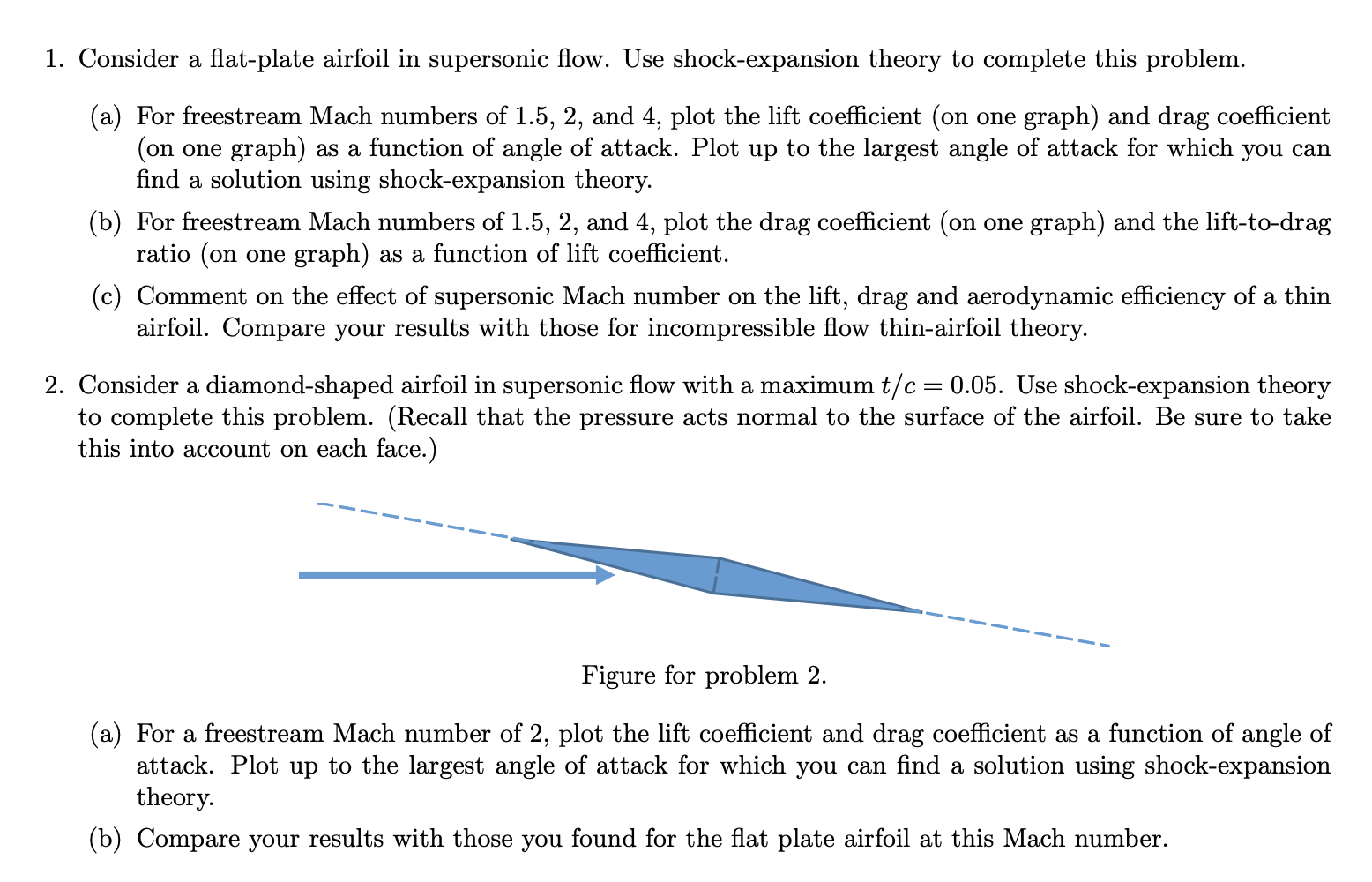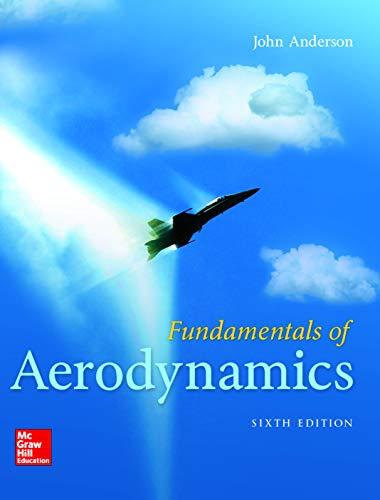Answered step by step
Verified Expert Solution
Question
1 Approved Answer
1. Consider a flat-plate airfoil in supersonic flow. Use shock-expansion theory to complete this problem. (a) For freestream Mach numbers of 1.5, 2, and

1. Consider a flat-plate airfoil in supersonic flow. Use shock-expansion theory to complete this problem. (a) For freestream Mach numbers of 1.5, 2, and 4, plot the lift coefficient (on one graph) and drag coefficient (on one graph) as a function of angle of attack. Plot up to the largest angle of attack for which you can find a solution using shock-expansion theory. (b) For freestream Mach numbers of 1.5, 2, and 4, plot the drag coefficient (on one graph) and the lift-to-drag ratio (on one graph) as a function of lift coefficient. (c) Comment on the effect of supersonic Mach number on the lift, drag and aerodynamic efficiency of a thin airfoil. Compare your results with those for incompressible flow thin-airfoil theory. 2. Consider a diamond-shaped airfoil in supersonic flow with a maximum t/c = 0.05. Use shock-expansion theory to complete this problem. (Recall that the pressure acts normal to the surface of the airfoil. Be sure to take this into account on each face.) Figure for problem 2. (a) For a freestream Mach number of 2, plot the lift coefficient and drag coefficient as a function of angle of attack. Plot up to the largest angle of attack for which you can find a solution using shock-expansion theory. (b) Compare your results with those you found for the flat plate airfoil at this Mach number.
Step by Step Solution
There are 3 Steps involved in it
Step: 1

Get Instant Access to Expert-Tailored Solutions
See step-by-step solutions with expert insights and AI powered tools for academic success
Step: 2

Step: 3

Ace Your Homework with AI
Get the answers you need in no time with our AI-driven, step-by-step assistance
Get Started


